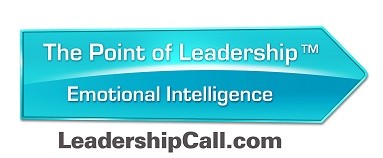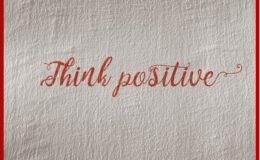The topic of emotional intelligence is an exciting one to discuss. We asked our good friend Amy Steindler to share her perspective on the EQ-i as it positively impacted a client. Thank you Amy!
One of the reasons I chose to supplement my coaching practice with the EQ-i 2.0 model is its unique ability to give clients important insights into how they make the choices that affect their lives. Since our daily moment-to-moment decisions determine everything—quality of life, relationship and career success, health, and in the worst-case scenario, survival—it’s a good idea to understand the internal dynamics that lead us to our choices.
Many clients seek coaching because they’ve lost confidence in their abilities, and don’t know what to do next. They feel stuck. Shaken by past decisions that turned out badly, they begin to question whether they have the wisdom to recognize the best course of action.
So how do they regain their footing? What skills do they need to develop so they can trust themselves no matter what they’re faced with?
Using the EQ-i as a coaching roadmap, I encourage clients to practice the foundational skill sets of self-perception, self-expression, and interpersonal relationships to a level of competency or mastery. Then we’re able to open the door to understanding how emotions affect their ability to see events clearly, avoid impulsive reactions, and solve problems with maturity, grace, and humor.
The skills of the decision-making composite, reality testing, impulse control, and problem solving, are like a Master Class in applying everything you’ve learned to the situations you face every day. If you think about it for a moment, we make a lot of decisions every day—some are small, inconsequential ones, and some have much higher stakes. The prevailing wisdom is that we make (are you sitting down?) an average of 35,000 decisions each day. So it’s probably a good idea to pay attention to how we make the choices that shape our lives.
Before we can make a solid, trustworthy decision, we have to get a grip on the reality of the situation. It’s not as easy as it sounds. Our past experiences and the unconscious biases and blind spots that we all possess cause us to respond to events using patterns we’ve established automatically. We are wired to tell ourselves a story about the events of our lives, and we’re often the victim in the story. Reality testing is a process of discernment that can make a crucial difference in how we feel about ourselves and our lives.
Reality testing opens the door to shifts in perspective that lead to shifts in thinking, which open up possibilities. The more possibilities we can discern, the more likely it is that we’ll find one that resonates with us. We can intentionally choose to respond from the emotional state we’d prefer, like confidence, clarity, groundedness, or peaceful receptivity.
I coached a financial adviser who practiced reality testing to shift his perspective, leading him to open his heart and mind to the needs of his client. Here’s how our conversation went. (I’ve edited it for conciseness, but this is essentially what it sounded like.)
Client: I got on a call today with an elderly man to talk about a new investment strategy. I sent all the materials ten days ahead of the call, and his son inserted himself into the call and said, “We don’t have enough information.” And we sent him every bit of the information he needed ten days ago! He just wanted to admonish me in front of his father. He was trying to make me look bad.
Coach: So his goal was to make you look bad?
Client: Yeah, he wanted to prove he was the boss by making me look bad.
Coach: And how did you show up when you were thinking, “He’s trying to make me look bad.”
Client: I was tense, and defensive. I was showing up for an altercation, and I stopped listening.
Coach: And how would you have shown up if you weren’t thinking that thought, “He’s trying to make me look bad?” If you assumed his intent was positive?
Client: I would have been calm, asked him what else he needed, and provided it without getting pissed off for the rest of the day. I would have heard him say, “We don’t have enough information,” instead of “You didn’t send us enough information, you idiot,” which is the story I made up about it.
It’s easy to believe our initial assessments of a situation are true, especially when our emotions are activated. If we don’t stop to assess, we can still make a decision. In fact we will make a decision—we just won’t make an intentional decision. In this scenario, my client made an unconscious decision to respond with the emotional energy of defensiveness rather than the intentional emotional energy of curiosity and connection.
If my client had taken a moment to assume that the son’s intentions were not to harm him, but to support his father making the best possible decision, my client might have spared himself an entire pissed-off day.
This client learned to question his beliefs, and not assume they’re facts, especially when they make him feel anxious, defensive, or upset. In a subsequent meeting, he approached the father and son from a relaxed and non-reactive state, and was able to listen to their complaints without taking them personally. He took responsibility for his emotional response by reality-checking his thoughts, and his impulse control improved organically as he practiced taking a moment to assess his circumstances before reacting.
He later told me that using that technique alone made his day-to-day interactions more enjoyable, reduced his stress level, and made him a happier, more productive advisor.
When we know more about our own decision-making processes, and are willing to practice taking different perspectives, we can make decisions that serve everyone better. It’s the fastest way to develop the trust in ourselves that allows us to handle whatever new or unexpected situations arise with open-hearted confidence, stay in alignment with our most closely held values, and raise our emotional intelligence quotient.
Here’s a tool that may help you test reality and shift your thinking to a more helpful perspective:
Reality Testing: The Antidote to Storytelling
Test Your Interpretation:
- List any objective data that supports, negates, or offers alternatives to your interpretation.
- What other possible interpretations might there be?
- What is your optimal response to this event?
- What would your new interpretation have to be for you to respond optimally?
Investigate your feelings about your interpretation:
- Is my interpretation based on obvious fact, or am I taking a cognitive shortcut?
- Will my interpretation best help protect my life, health, my commitment to truth, or is my ego in danger?
- Will my interpretation best help my avoid undesirable/unnecessary conflict, or am I escalating?
- Will my interpretation best help me feel the way that will best serve me, and those I am developing relationships with?

Amy Steindler, ACC, is the founder of Ovation Coaching, and a certified EQ-i practitioner. For over a decade, she has been coaching individuals and training corporate groups to succeed at work, at home, and in the relationships that are most important to them. She uses a unique balance of grace, humor, practicality, and whimsy to guide them to develop emotional intelligence skills, curiosity, mindfulness, and growth/learning mindsets. Amy holds a B.A. degree from the College of William and Mary, where she has taught mindfulness classes, and she holds a certification in engagement and life coaching from Anne Arundel Community College, where she has been an adjunct professor, and occasionally co-facilitates coach training classes. She occasionally shares insights and ideas on her blog. Visit her website at www.ovation.coach or her LinkedIn profile to learn more.




